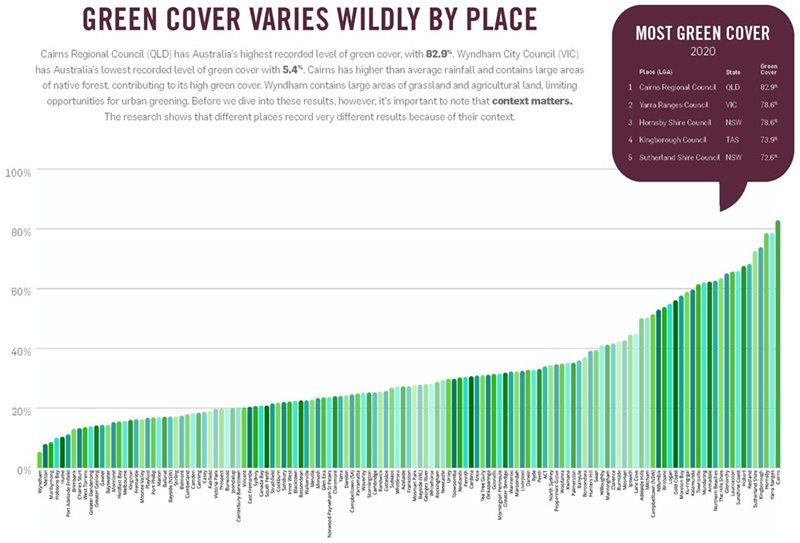Green cover becoming a major concern in some urban areas
Australia’s largest urban greening initiative has today revealed 67 per cent of suburbs and cities across the country will face significant challenges in growing and maintaining green cover in the future, as our cities grapple with a rising population and grey spaces expand with urban development.
A new report "Where Will all the Trees Be?" by Greener Spaces Better Places investigates the changing proportion of green cover across the different residential regions of Australia.
The third report in Australia’s only national tree canopy benchmarking series, led by RMIT University and Greener Spaces Better Places – also confirms the majority (69 per cent) of our urban areas have lost green cover (trees and shrubs) since 2013, spanning 131 urban and peri-urban Local Government Areas (LGAs).
The good news is that 62% of our urban places have more green cover since 2016, but 69% of our urban places have less green cover than they had back in 2013.
This has the potential to become a real climate issue for residents.
Cairns Regional Council (QLD) has Australia’s highest recorded level of green cover, with 82.9%. Wyndham City Council (VIC) has Australia’s lowest recorded level of green cover with 5.4%.
Sunshine Coast curently ranks 8th out of the 131 LGA's with 65.9% green cover. The Sunshine Coast also ranked second for the most growth in green cover between 2016-2020, with an increase of 8.4%.

Source: Greener Spaces Better Places. Click here for the full Sunshine Coast Report.
CLICK HERE TO FIND OUT HOW OTHER REGIONS RATE
Associate Professor Joe Hurley RMIT lead researcher, says that while some places are defying the odds and growing thriving urban forests, others have reported concerning levels of loss and face significant challenges to grow their green cover in the future. “Fundamentally, as our suburbs, towns and cities grow, so should our green cover - but in order to increase our urban green cover, we need to understand what’s happening where, and why.”
Why is green cover important?
Greener spaces make urban places better. They create places that are more appealing to work, play and relax in and help us feel a sense of place and community within our busy lives.
They are good for our health and wellbeing, cool our cities, reduce air pollutants, regulate water flow, lower carbon emissions and even increase property value.
Green cover creates many of the other big benefits, like keeping suburbs and homes cool and giving shade for walking, running and active transport. It also brings wildlife into suburbs and makes them more appealing to the eye which, in turn, can make them more valuable.
Yet green space is often ignored when plans are drawn and concrete poured.
Dr Dominique Hes, regenerative development expert, said, "Healthy, happy and liveable cities rely on urban greening for a range of benefits, and are critical for mental and physical well being. Studies show as little as 20 minutes in green spaces can reduce stress due to how our brains are wired. Our brains evolved in nature, and when surrounded by green spaces the fight or flight and emotional parts of the brain are less on edge - this affinity to connect to nature is called biophilia. This innate connection has never been more evident than during the COVID-19 pandemic, where we've become acutely aware of the importance of access to nature in our everyday lives."
“Green cover increases biodiversity and helps to cool our urban environments. It also works to mitigate the effects of climate change by absorbing carbon dioxide from surrounding environments, pumping oxygen back into the atmosphere, working as the 'lungs' of our cities. If we plan ahead and plant now, we can grow interconnected, regenerative and prosperous places for people to live, work and relax into the future,” said Dr Hes.
Meg Caffin, urban forest expert and research consultant, said, “To help stem green cover loss and ensure the future viability of our urban forests in our suburbs and cities, we can plan better and plant now. We can also learn from who is doing this well, even within the context of challenges, and drive change within government, businesses and the community.”
In the face of a changing climate, green cover is crucial for mitigating the impacts of urban heat, cooling our urban landscapes and providing a range of social, environmental, and economic benefits.”





